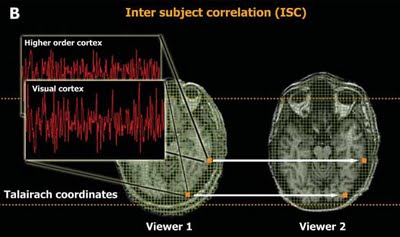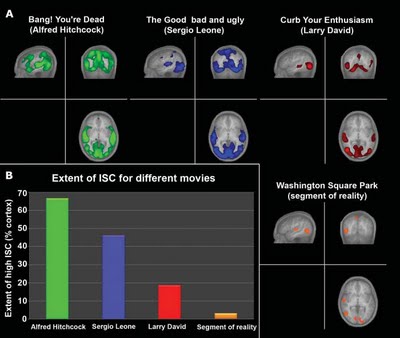Tagged: Neuromarketing
Your Brain on Ads
Obviously, our brain is the most complex part of our body, but did you ever think that people would use its powers to persuade and manipulate you to buy products seen in advertisements?
Well, with the ever-changing and enhancing state of technology these days, it is no surprise that people would be bound to create more amazing advancements, especially when applied to consumerism. Neuromarketers, groups of researchers who use techniques from neuroscience to study people’s reactions to products, are bringing new studies to the forefront due to the fact that only 2 percent of the brain’s energy is expended on conscious activities.
A.K. Pradeep, founder and chief executive of NeuroFocus, a neuromarketing firm based in Berkeley, California, believes that the only way to truly understand people’s inclinations is through studying their subconscious. Therefore, NeuroFocus has led the way in this upcoming field by researching volunteers through the use of eye-tracking devices and measuring the brain’s electrical frequencies.
A volunteer undergoing testing that focuses on measuring his brain’s electrical frequencies and his eye movements.
By tapping into this realm, researchers are able to get a clear view of people’s unconscious thoughts when viewing commercials, movie trailers, or web sites. As Dr. Pradeep says, “We basically compute the deep subconscious response to stimuli.”
This process has now led way to multiple companies forming in hopes of furthering the development of neuromarketing. And many big-name sponsors -such as Google, CBS, and Disney- have used neuromarketing to test consumer responses to advertisements, even political ones.
However, some people are concerned that companies could take advantage of consumer’s thoughts and use those against them.
“If I persuaded you to choose Toothpaste A or Toothpaste B, you haven’t really lost much, but if I persuaded you to choose President A or President B, the consequences could be much more profound” Dr.Pradeep says.
The likelihood of this is not large since companies are not focusing heavily on the political side of things and we do still have control over our brains.
A professor of neuroscience and psychology at Berkeley, Dr. Robert T. Knight explains that neuromarketing may distinguish between one’s positive or negative emotions, but it cannot be specific enough as to say whether one’s positive emotion is joy or excitement. The only measurable variable is if the viewer pays attention. No correlation has been made between the brain-pattern responses to neuromarketing and purchasing or reactionary behavior.
Whatever your opinion, the initiative is just beginning, and the Advertising Research Foundation has developed a project for defining industrywide standards based off of reviewing research done by participating neuromarketing firms.
The future looks bright for these companies as sponsors have poured in with great interest, but only time will tell the fate of our brains being used for or against us.
Neuromarketing – Ads That Whisper to the Brain – NYTimes.com
Further Blending the Arts and Sciences
Ever hear of “neurocinematics" – a term coined by Uri Hasson of Princeton University?
If not, it’s basically a method that has been employed by neuromarketers, using instruments that had been predominantly handled by scientists, that’s targeted towards filmmakers. Using tools such as biometric devices (to track eye movements and heart rate), EEG (to analyze brain waves), and fMRI (to record brain activity), neuromarketers can help filmmakers better understand their viewers’ reactions, whether to completed pieces, screenings, or trailers (the latest Harry Potter movie trailer employed neurocinematics).
predominantly handled by scientists, that’s targeted towards filmmakers. Using tools such as biometric devices (to track eye movements and heart rate), EEG (to analyze brain waves), and fMRI (to record brain activity), neuromarketers can help filmmakers better understand their viewers’ reactions, whether to completed pieces, screenings, or trailers (the latest Harry Potter movie trailer employed neurocinematics).
“Under the assumption that mental states are tightly related to brain states" (a hypothesis that is widely accepted by most neuroscientists and many philosophers), Hasson and colleagues found that "some films can exert considerable control over brain activity and eye movements.”
Neuromarketers ensure the reliability of their findings using several techniques.
To provide a basis for measuring the viewers’ brain activity and to avoid measuring noise dissociated from the task at hand, neuromarketers assess the participant viewers while watching non-stimulating targets (e.g. a standard cross amidst gray background), which should elicit no response. Then, neuromarketers compare this response (or lack thereof) to that elicited from a clip. Some participants may even be asked to watch a clip up to three or four times for comparison purposes.
Because the response of one participant does not say a lot about a clip, neuromarketers use inter-subject correlation analysis (ISC) to ensure further reliability. They can “assess similarities in the spatiotemporal  responses across viewers’ brains,” in which correlations can “extend far beyond the visual and auditory cortices" to other areas, such as the lateral sulcus (LS), the postcentral sulcus, and the cingulate gyrus.
responses across viewers’ brains,” in which correlations can “extend far beyond the visual and auditory cortices" to other areas, such as the lateral sulcus (LS), the postcentral sulcus, and the cingulate gyrus.
In 2008, Uri Hasson and colleagues measured how viewers’ brains responded to different types of films, ranging from real-life scenarios, documentaries, and art films to Hollywood blockbusters. While Alfred Hitchcock's big hit Bang! You're Dead elicited the same response across all viewers in 65% of the frontal cortex, Larry David’s  Curb Your Enthusiasm elicited the same response in only 18%.
Curb Your Enthusiasm elicited the same response in only 18%.
Hasson alleges that the ISC level indicates the extent of control a filmmaker has over his viewers’ experiences, whether intentionally or not, leaving Hitchcock consequently with more control than Larry David.
Hasson’s team also changed the order of scenes for different participants and assessed viewers’ reactions, finding that the more coherent the scene order, the higher the ISC in parts of the brain involved in extracting meaning. Changing the order of scenes can help filmmakers determine which sequence effectively promotes their viewers’ understanding.
Phil Carlsen and Devon Hubbard of MindSign in San Diego, CA. suggest that using neurocinematics can help filmmakers decide which actor will elicit more brain activity from viewers and consequently, give them a better shot in the box office. Not only that, but the method can also help them assign movie ratings, depending on how brain areas associated with disgust and approval respond.
Carlsen has also found, not surprisingly, that 3D scenes activate the brain more so than those of 2D, particularly when viewers used modern polarized glasses over the older blue and red ones.
Neurocinematics has the ability to change the film industry immensely. Whether a filmmaker wants near-complete control or just enough to ensure his message crosses over, he can use this method to make it happen. Even the U.S. Advertising Research Foundation is seriously considering this new method, defining regulatory standards and a quality consult, says Ron Wright of Sands Research.
While some may disagree over whether neurocinematics is killing creativity or invading human interest or personal privacy, others might find it revolutionary, providing filmmakers with more opportunities to create their ideal pieces, and viewers with more engaging, worthwhile films.
Wright, along with neuromarketing consultant Roger Dooley, would likely argue that the method is far from invading human interest or privacy. Wright believes there are too many variables in determining the human  mental “buy button,” which would hypothetically lead someone to spend money – in this case on a film. Dooley does not believe that neuromarketers will “ever find some sort of magic spot that will allow [them] to accurately predict whether someone will purchase a product or not.”
mental “buy button,” which would hypothetically lead someone to spend money – in this case on a film. Dooley does not believe that neuromarketers will “ever find some sort of magic spot that will allow [them] to accurately predict whether someone will purchase a product or not.”
Neurocinematics, agreeable or not, is becoming an important element in the blending of the arts and sciences.
Blending with dozens of other fields and creating amazing products and methods out of doing so, neuroscience, in my opinion, has driven down quite the revolutionary road.
Sources & Additional interesting, related sites:
Songs in the key of EEG – Michael Brooks, NewScientist
Neurocinema – film producer Peter Katz, YouTube
MindSign Neuromarketing -- MindSign
Science of the Movies - MindSign Neuromarketing – Nar Williams, YouTube
DOI: 10.3167/proj.2008.020102) – Hasson, et al., Projections
Brain scans gauge horror flick fear factor – Grace Wong, CNN